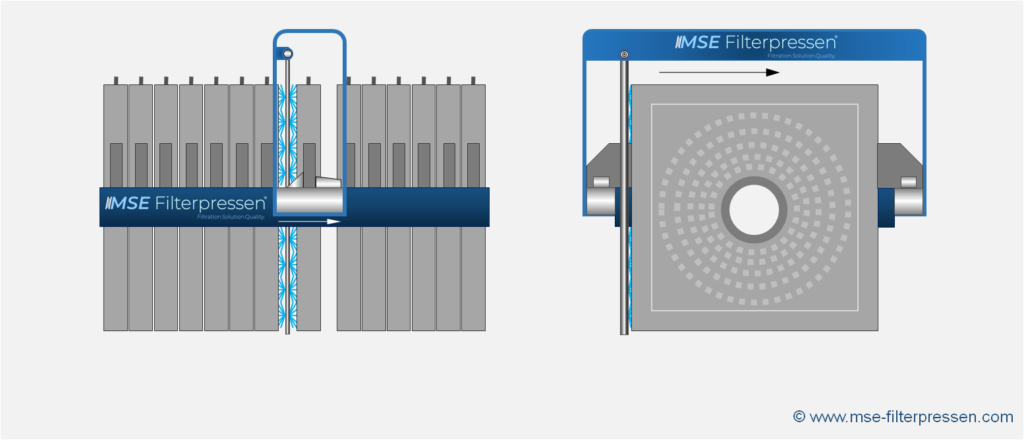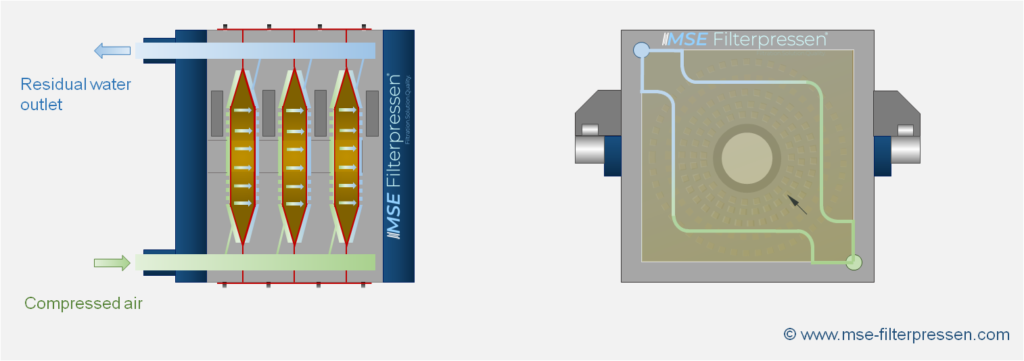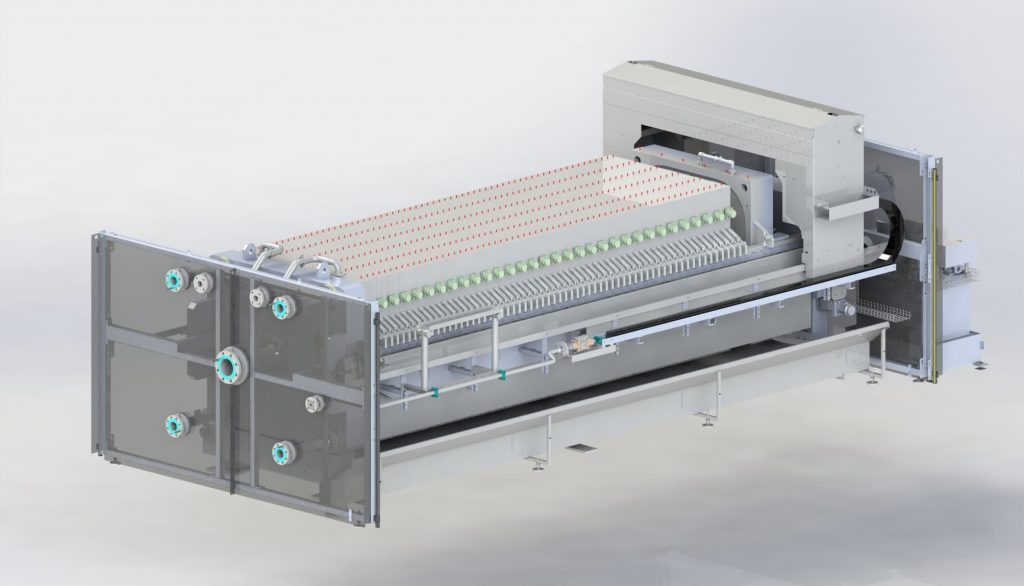The filter press machine is a mechanical solid-liquid separation unit which is used in the field of pressure filtration of suspensions (heterogeneous mixture of a liquid and finely divided solids). Its origin lies in southwestern China. As early as 1600 BC, camellia oil was extracted from the camellia plant using a wooden filter press architecture. By using the Johnson filter press in 1853, mechanical filter presses were also used in the United Kingdom to extract seed oil using pressure plates.
Features of a MSE filter press
WHAT IS A FILTER PRESS MACHINE?
DECISIVE FACTORS IN THE SELECTION OF THE RIGHT FILTRATION METHOD
Factors like high filtration quality, a high degree of drainage and a high dry matter content (DM content) play a decisive role in choosing the right filtration method. The filter press is one of the oldest process filters and still remains a pioneer in industrial separation processes today, however, ahead of centrifuges, decanters and belt filters.
Depending on the application area, the filter press machine has different functions:
-
- Purification of raw materials and products as well as separation of by-products
-
- Recycling of solvents and unreacted reactants
-
- Removal of impurities from waste water
-
- Extraction of recyclable materials and raw materials
The solid construction of a filter press, innovation in design, increased energy efficiency and expansion possibilities of automation modules lead to a steadily increasing demand for filter press machines catapulting it to a basis unsurpassed by conventional dewatering processes for solids.
STRUCTURE OF A FILTER PRESS MACHINE
MSE filter presses are designed in modular design. The basis for this is the solid and heavy-duty steel filter press frame, which consists of the following main components: Feeding stands with filtrate outlet (head piece), hydraulic stand with locking cylinder (pressure piece), cross beam and side rails on which the individual filter plates including filter cloths are arranged accordingly. MSE filter presses such as the chamber filter press or the membrane filter press can be configured as required depending on the series. Depending on the respective series, the design of a filter press machine also offers for instance the following automation and expansion options: Automatic plate shifting, vibrating devices for rapid cake discharge, automatic filter cloth cleaning or membrane technology.
MSE filter presses are designed to work with a single hydraulic cylinder. Regardless of the filter press size (including 2000x2000mm), this design results in solid, reliable, and insensitive automation features with lower performance, fewer control valves, and lower complexity than multi-cylinder designs. The sidebar filter press line from MSE is also lighter, cheaper, and handier than an overhead filter press because of its design.
Compared to our domestic and foreign competitors, our systems stand out above all through their longevity and reliability. Our filter presses and features are low-maintenance and highly efficient thanks to the perfect interaction of all components. Upon request, our project-specific filter presses are designed for an operating pressure of up to 30 bar in order to be able to filter even the finest particles. In special cases, a higher design is possible. A structured project management and a professional service is what you can expect from us in any case.

SELECTION OF THE RIGHT FILTER PRESS FOR OPTIMUM SOLID-LIQUID SEPARATION
The number, type and size of the movable plate package is determined by the medium to be filtered and thus determines the format of the filter press machine. MSE filter presses can be used for a variety of applications due to their design specific variability. The size of the solid particles to be separated using special filter cloths extends from the µm range (e.g. enzymes) to the mm range (e.g. sewage sludge). MSE Filterpressen supplies filter plate sizes from 400×400 mm for small (mostly) functional laboratory filter presses for pilot projects up to 2000×2000 mm for large filter presses (e.g. for use in the chemical industry as well as mining).
OPTIONAL MACHINE EQUIPMENT
FILTER PRESS PRE-LAYOUT
Calculate the size of your chamber filter press with our online calculator. This service will assist you in planning and sizing your filter press machine. Please note that this result is an estimated value based on solid-liquid separation. We will be pleased to support you with your detailed calculation of your dewatering plant. Please contact us for more.
THE RIGHT PARTNER IS DECISIVE - MSE FILTERPRESSEN® FOR YOUR SUCCESS
- 40 years experience in planning, development and construction of filter presses
- Competent service (from consultation to processing to maintenance)
- High performance range with full vertical integration and high value retention (Made in Germany)
- Successively optimized processes to provide the best possible customer benefit
- Technically trained and experienced staff as guarantor for the consistently high quality
- Close cooperation with well-known suppliers in the selection of filter plates and filter cloths
- Economical and efficient design of your filter press through upstream implementation of laboratory tests and test series
- High filtration quality, high filtration rate, high degree of dewatering and maximum washing performance
SEE MORE
AUTOMATION MODULES
With the automation & expansion modules, we offer our customers advanced solutions to increase the productivity and flexibility of your filter press. From this, MSE generates custom-fit and tailor-made solutions – from the single machine to the fully automated turnkey filtration system.
MSE SERVICES
MSE Services offers you a comprehensive range of transparent and clearly structured services for your filter press system. As a reliable service partner, we accompany you throughout the entire life cycle of your system and ensure its productivity and availability.
PROCESS TECHNOLOGY
Cake filtration is a mechanical process for the separation of solid-containing liquids. It pertains to surface filtration like cross-flow filtration. In contrast to depth filters, the actual separation effect takes place through the filter cake, which settles on the filter cloth.





















